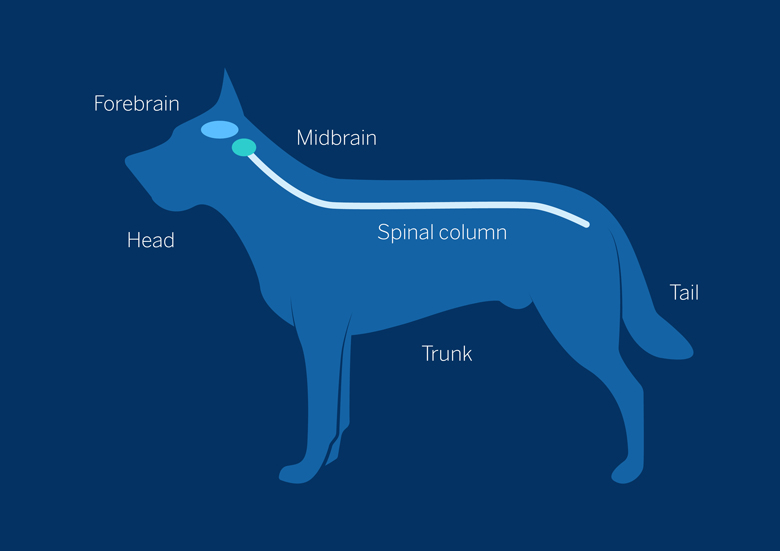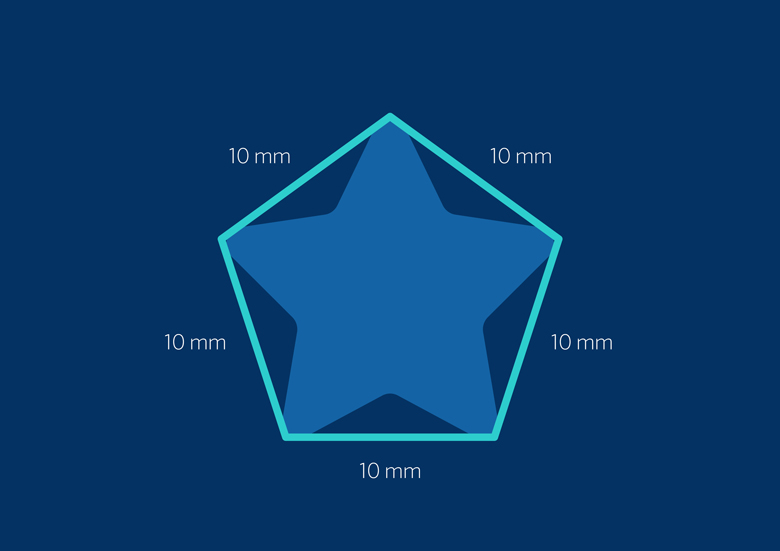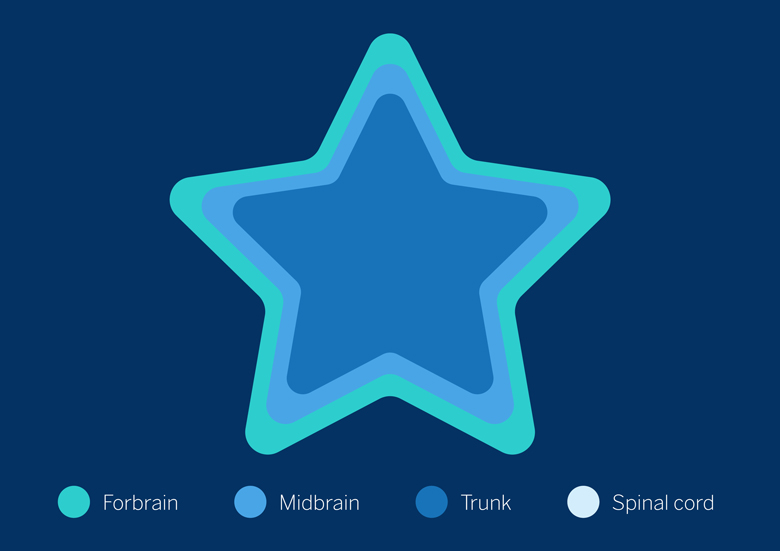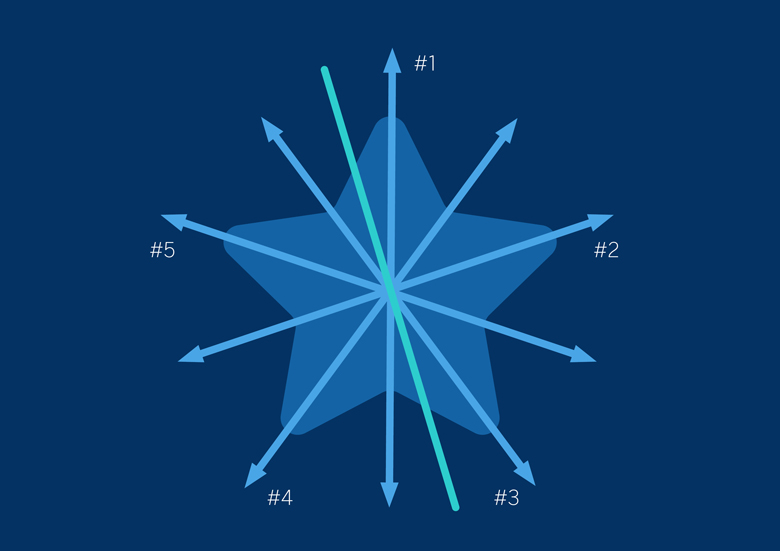How would starfish wear trousers? Although this may sound like a surreal question at first, it becomes less so when you discover that it is scientists themselves who are asking the question and trying to figure out the answer. Let’s see why:
We are all familiar with the shape of a prototypical starfish, with its five limbs gracefully unfurling around a central body or disc. But which of these limbs are the arms and which are the legs? Or to put it another way, which are the upper limbs and which the lower limbs, or are the real legs the small tubular tentacles on the underside of the limbs that they use to move around? Moreover, does it even make sense to talk about arms and legs in the case of starfish and of all echinoderms in general?
Echinoderms are a phylum (Echinodermata) of marine invertebrate organisms that includes such well-known species as starfish, sea urchins, brittle stars and sea lilies and, with the exception of holothurians or sea cucumbers, they are all radially symmetrical, and most of them are pentamerous (5-pointed).
For most animals, identifying the lower limbs is a simple task. There is a scientific explanation for this: almost all are characterised by bilateral symmetry, which means a body with two symmetrical sides (right and left) and a body structure that is head-trunk/tail (or taking the nervous system as a reference: forebrain-midbrain-spinal cord), which appears during the embryonic or larval stage.

However, starfish have evolved in a very different way: they are not bilaterally symmetrical but radially symmetrical (which in the case of five-armed starfish is pentaradial or pentameral symmetry), with the mouth at the bottom of the central “body” and the anus at the top. You could say that starfish spend their lives lying on their stomachs.
Brainteaser 1: Symmetry of a starfish…
How many planes of symmetry does a prototypical starfish have? And axes of symmetry? Identify them.
Plane of symmetry: a plane that divides a body into two parts so that one part is the mirror image (or reflection) of the other.
Axis of symmetry: an imaginary line that runs through a body so that when rotated about a certain angle, it looks identical.

Brainteaser 1.2: …and the geometry of a starfish
What is the area of a pentagram starfish in which the distance between the tips of two adjacent limbs is 10 mm?

The question of how starfish (and all echinoderms in general) are structured is a challenge for marine biologists. Even more so when these creatures have evolved from an ancestor with bilateral symmetry. To complicate matters further, in the embryonic stage they still have bilateral symmetry and a “convenient” body structure. But as they develop into adults, they replace it with radial symmetry. Scientists explain this transformation as an adaptation to the benthic habitats they inhabit. According to this hypothesis, because their sensory organs are underdeveloped and they cannot move quickly, the radial structure allows them to protect themselves and be alert to danger signals coming from all directions.
The underlying question is therefore whether, beneath this star-like appearance, echinoderms still retain a bilateral body structure and can therefore be identified as having a head, a trunk and a hind part.
Brainteaser 2: Don’t let their arms block your view of the Boeing
This sea of starfish hides a plane. Can you see it?
Biologists have various hypotheses: the first is that the forebrain corresponds to the upper arm, the midbrain to the central part and the middle pair of arms, and the trunk to the two lower arms. In other words, a distribution like that of Patrick Star from SpongeBob.

The second hypothesis is that each arm represents a complete body structure and therefore three parts can be distinguished.

And a third hypothesis is that the body structure corresponds to the mouth-anus axis with the prosencephalon in the lower part of the disc, the mesencephalon above it, and the trunk or tail on top.

Recent research seems to have solved the puzzle by pinpointing where certain genes are expressed in each of the three regions of the nervous system. Specifically, the researchers compared the expression of these genes in starfish with those in bilaterian groups of animals. They found that the genes involved in trunk formation were hardly expressed at all.
So the answer to the mystery of the starfish body structure is that they have (virtually) no body (and no legs) and are all head. Or, to put it more scientifically, the characteristic genes of the forebrain are expressed in the middle and extend through the central part of each arm. Around it is the midbrain, while only a few of the genes specific to the spinal cord are expressed at the edge, around the midbrain, but the trunk as such does not exist. This is a body plan that scientists believe can be applied to the rest of the radial echinoderms.

So it could be said that starfish are all head and therefore there is no point in trying to put a pair trousers on them. If anything, it should be a large cap.
To complicate matters further, this does not necessarily mean that starfish have completely shed their bilaterality. At least that is the conclusion reached by several studies which have found that, despite their radial symmetry, starfish still display bilateral tendencies. For example, when escaping from danger, they use two of their arms—those located at the bottom of the star—as their main driving forces or tractors to move. To put it simply, we can say that they hold on with their upper arms and propel themselves with their lower arms (as when we climb). And, in the same way, when they do a somersault to get on their backs, they lean on their two lower arms, which are the ones that support the flip.
Brainteaser 3: Find the four differences
In this “bilateral” set-up each side is (almost) symmetrical to the other.
Solutions

Comments on this publication